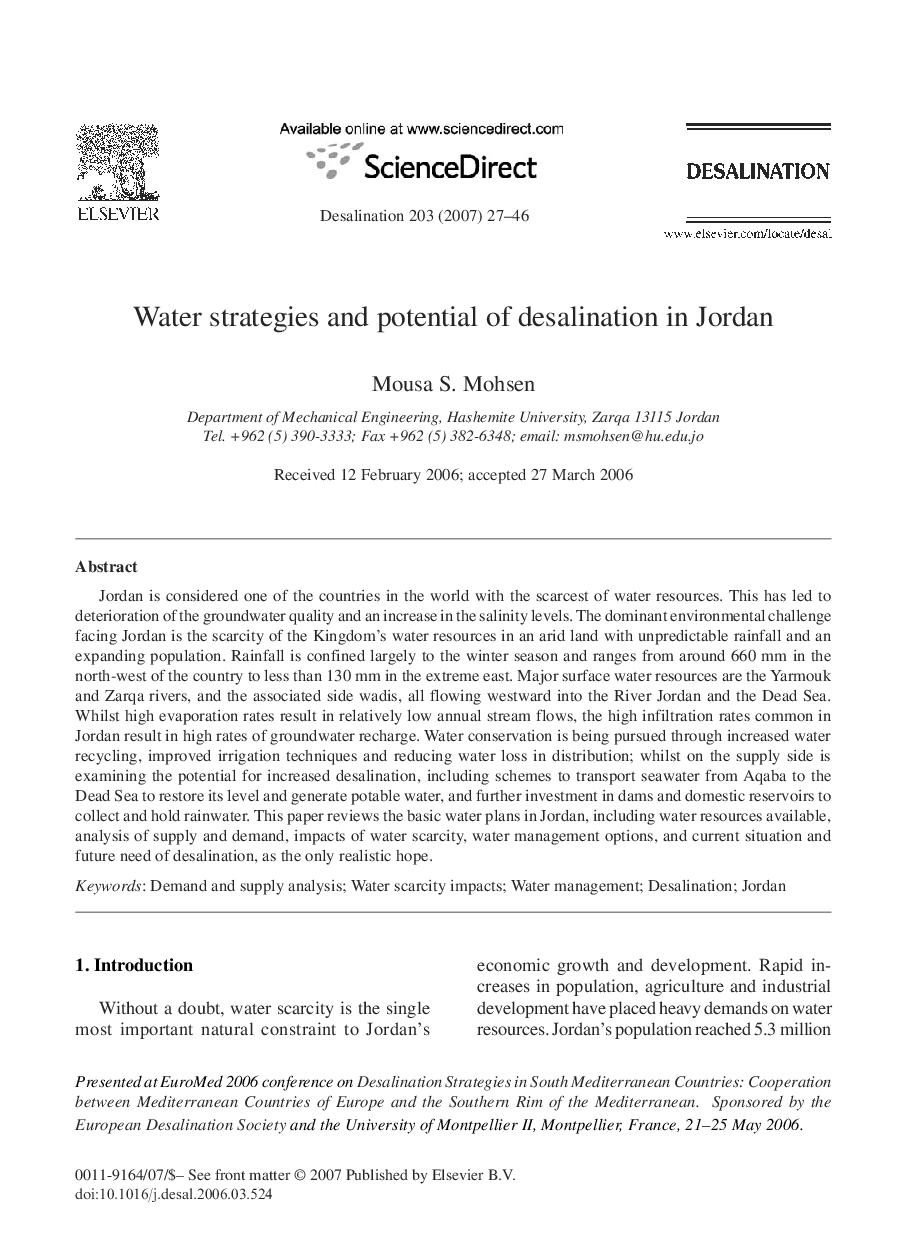| Article ID | Journal | Published Year | Pages | File Type |
|---|---|---|---|---|
| 628177 | Desalination | 2007 | 20 Pages |
Jordan is considered one of the countries in the world with the scarcest of water resources. This has led to deterioration of the groundwater quality and an increase in the salinity levels. The dominant environmental challenge facing Jordan is the scarcity of the Kingdom's water resources in an arid land with unpredictable rainfall and an expanding population. Rainfall is confined largely to the winter season and ranges from around 660 mm in the north-west of the country to less than 130 mm in the extreme east. Major surface water resources are the Yarmouk and Zarqa rivers, and the associated side wadis, all flowing westward into the River Jordan and the Dead Sea. Whilst high evaporation rates result in relatively low annual stream flows, the high infiltration rates common in Jordan result in high rates of groundwater recharge. Water conservation is being pursued through increased water recycling, improved irrigation techniques and reducing water loss in distribution; whilst on the supply side is examining the potential for increased desalination, including schemes to transport seawater from Aqaba to the Dead Sea to restore its level and generate potable water, and further investment in dams and domestic reservoirs to collect and hold rainwater. This paper reviews the basic water plans in Jordan, including water resources available, analysis of supply and demand, impacts of water scarcity, water management options, and current situation and future need of desalination, as the only realistic hope.
